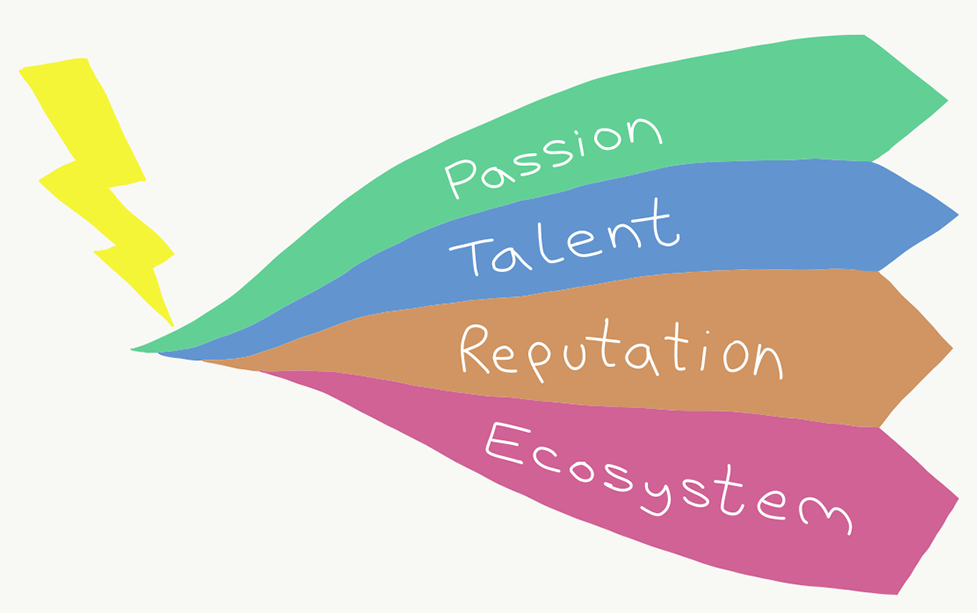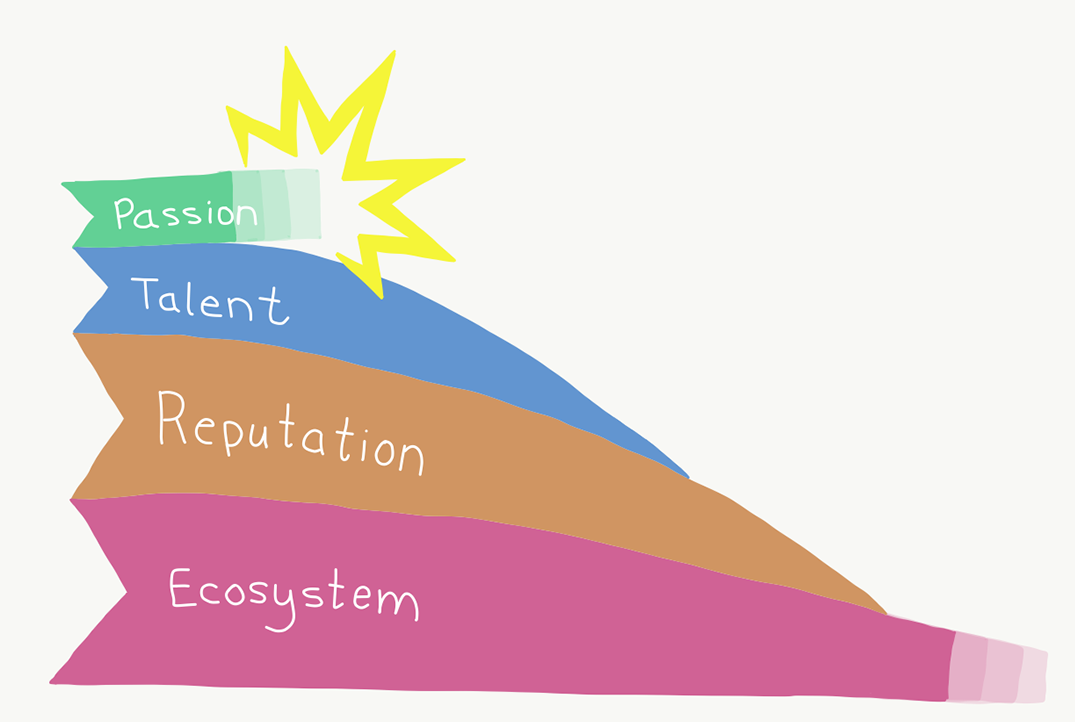Essential ingredients for digital transformation
I recently read a really nice post by Drew Firment (thanks go to Chis Swan for sharing it). Drew’s article reminded me of some patterns I have seen in big transformations - most recently in my digital transformation work but also in the earlier rounds of change we called internet- or electronic-business transformation. This post is a first attempt at making these patterns explicit, initially so I can use them in my own work. It would be great to get your feedback if you think they will help you too. Lots of other people have already been trying to make sense of this area through frameworks, maturity models, life-cycles and other models. I have started to collect a list of some of these at the end of this post and they are worth reviewing as well.
The ingredients of transformation
I’ll start with four main ingredients which, when combined, form the basis of digital transformation. The key ingredients are:
- The passion, or drive, which ultimately powers the transformation
- A pool of talented people who can build the new understanding, ways of working or operational capabilities needed for the transformation
- This team’s reputation for delivery which grows as they create a track record of successes
- An ecosystem of partners and capabilities which accumulates from the efforts of the team.
I have deliberately left out things like process models and technical infrastructure. Transformation does have technical and procedural aspects but the progress of transformation does not feel like the flow of a structured process or the operation of a machine. It is very much more organic than that. In many cases, it defies simplistic measurement and analogies based upon politics or ecology would probably be more fitting, for example:
- Financial models and other kinds of business justification might support the drive for change but are not a substitute for the emotional and personal commitment associated with passion. People who are passionate about the changes ask questions like, “Are we being ambitious enough?” rather than, “What is the return on investment?”
- People can grow and develop but completion of training courses and accumulation of experience do not automatically create talent.
- A strong reputation can be built in the face of obstacles and setbacks but can be elusive even if time, costs and quality metrics are on track.
- The performance of an ecosystem is as much about the balance and interaction of the participants as it is about their individual attributes.
Ebbs and flows of transformation
The diagram below illustrates the simple pattern that I have observed - at least in successful transformations.

- Nothing happens without passion. This might be the result of some shock or revelation or can be fuelled by insights or rationale which builds up over time. Passion sets the pace and direction of the transformation.
- Passion is the element that initially attracts and motivates talented people. Later the ingredients create a virtuous circle with more talented people inspired by the team’s reputation or accessed through the ecosystem.
- Passion is also essential to help the team overcome obstacles, objections and setbacks and successfully make progress. A track record of success is what builds the reputation for delivery.
- Passion is the source of the shared purpose and values which binds various organisations, communities, operating units and infrastructure in the ecosystem into a larger, united entity.
Clearly, there will be a need to engage and manage stakeholders, establish a common vision and roadmap and deal with administrative requirements such as securing funding, facilities, infrastructure and commercial services but, to a certain extent, these are details that executives can leave to their talented teams. If the transformation ingredients are in place these things will emerge anyway. Without the transformation ingredients they will simply become bureaucratic overhead.
What if something changes or goes wrong? My theory is this pattern can still help make sense of these situations.

Most of the problems I have observed can be traced back to passion, or lack of it. Examples can include the departure of a key leader or an external shock which shifts the drive and energy onto a different track. Competing passions leading in different directions can also damage one or both goals. The effect of this is often a gradual and slow decline as talented people leave, the reputation for delivering wanes and the ecosystem falls into obsolescence when it is not maintained and refreshed.
Another class of problem appears when the ingredients are out of balance, such as a lack of attention on growing the pool of talented people or not actively cultivating a reputation. Transformation will stall without the positive feedback loops between these ingredients.
Exploiting the patterns
In a follow up post I will share some ideas about how to exploit these patterns to maintain, accelerate or scale a transformation initiative. In the meantime I would really appreciate any feedback you have on these ideas.

Related posts:
- The six stages of digital transformation by Brian Solis
- What is Digital Business and Digital Transformation? by Isaac Sacolick
- In Digital Transformation, Culture Change Goes Hand in Hand with Tech Change by Dion Hinchcliffe
- Stop Wasting Money on Digital Transformation an interview with the Met Office’s Dr Alberto Arribas in Computing
- Change is more like adding milk to coffee by Niels Pflaeging
- Digital Maturity Model from IDC

